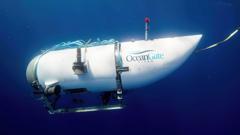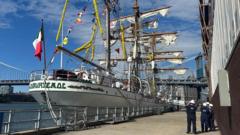OceanGate's Titan submersible imploded on its journey to the wreck of the Titanic because of poor engineering and multiple failures to test the vessel, according to an official report.
Titan imploded in June 2023, killing all five passengers on board including OceanGate's chief executive.
The US National Transportation Safety Board (NTSB) found the engineering process behind the vehicle was inadequate, resulting in faults which meant it failed to meet strength and durability requirements.
The NTSB said because the firm did not adequately test Titan it did not know its actual strength. It was also unaware it was damaged and should have been removed from service before its last voyage.
Titan disappeared in the North Atlantic as it attempted to dive to the wreck of Titanic, located about 372 miles from St. John's in Newfoundland and Labrador, Canada.
In August, the US Coast Guard released a damning report into the implosion, which found that the incident was preventable and criticized OceanGate's critically flawed safety practices.
The passengers, who paid up to $250,000 each for the dive, included deep-sea explorer Paul-Henri Nargeolet, Shahzada Dawood and his son Suleman Dawood, and entrepreneur Hamish Harding.
Designed and built by OceanGate, Titan measured 6.7m (22ft) long with a passenger compartment made of carbon fiber. It imploded at a depth of 3,363m (11,033ft), just short of the Titanic wreck's depth of 3,880m.
During its investigation, the NTSB discovered that there were serious issues regarding the safety culture at OceanGate, where employees voiced concerns that safety issues were often ignored. The company has since ceased operations as a result of the incident.
The NTSB has recommended a review of how passenger-carrying pressure vessels are regulated to prevent such tragedies in the future.





















